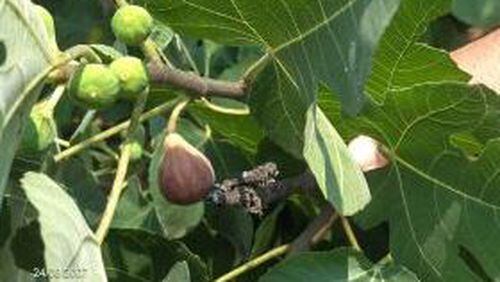Q: I have a young fig tree. Last year I got 25 delicious figs. This year none of the figs are ripening. I have over 40 green figs of various sizes on the tree. Sharon McClurd, Canton
A: I really should patent a product called "Patience" that gardeners could apply to plants every week until desired results are obtained. If you think you are anxious about the figs ripening, think about your fig tree's point of view. It wants nothing more than to reproduce itself via its ripe fruit! I think if you have a few more days of bright sunshine, the figs will ripen as they should.
Q: How and when I can prune back a large rhododendron? Ruth Mikell, email
A: In late summer, it's best to split the job into two parts. Remove about 25 percent of the plant this winter but leave some of the shorter limbs that have flower buds on them so you can enjoy blooms next year. After the rhododendron blossoms next spring you can remove another 25 percent. That should bring the size more to your liking.
Q: I just received some spider lily bulbs. Should I plant now or refrigerate until spring? Janet Ballard, email
A: Spider lily, Lycoris radiata, blooms in fall. It's likely the bulbs you have were harvested after their leaves faded last spring. If that's the case, they will bloom for you a few weeks after you plant them now. Refrigeration would be more likely to hurt than help them.
Q: For the past three years I've battled weeds in my fescue lawn. I'm considering tilling or aggressively aerating next spring and sowing zoysia. The lawn gets at least 6 hours of mostly full sun. Russ Atkins, Gainesville
A: Zoysia could be a good choice. It is a great competitor to weeds. It sounds like you have enough sun to make the grass happy. If you decide to plant seed rather than sod, the best time to do it is in late May or early June next year. The key to the process is keeping the seed and soil moist for a couple of weeks after you plant. Grass grows best when it has at least six inches of soft soil for the roots to explore. You might have success by thoroughly aerating the soil but tilling would be the best option.
Q: Some of the blades of my centipede grass are turning red. Not sure if excess rain is a contributing factor. Gloria Willson, Bluffton, SC.
A: Centipede grass is well-known to turn red as a response to stresses like traffic, wear, drought, low fertility, etc. If the stress is removed, the red color disappears. Use your intuition to figure out what's causing the grass to be unhappy and then fix it.
Q: If I use cottonseed hulls, will I end up with a garden full of cotton? Are there cotton seeds mixed in with the hulls? Jordan Shaw, email
A: The cottonseed hulls that come from a cotton gin usually don't have many seeds mixed in. Cotton gins are very efficient at separating the seed from the hulls. The seeds are sold for cattle feed or for planting the next crop, and hulls degrade the value of the product. I have never heard of anyone finding a cotton plant where they used cottonseed hulls but it wouldn't surprise me if that should happen once in a while.
About the Author






